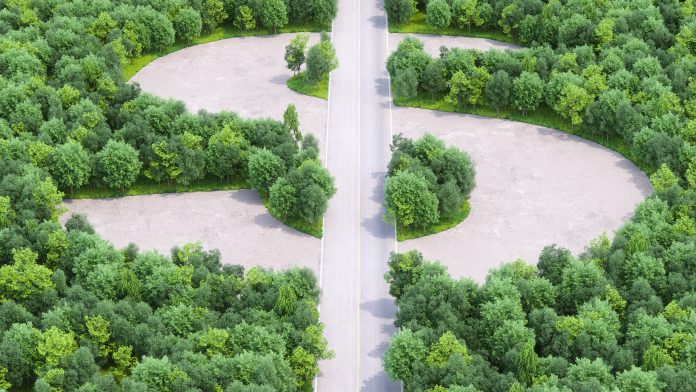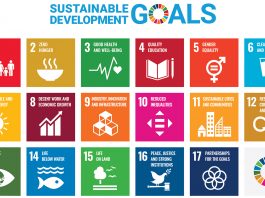The establishment of a new free to use, open-source software may potentially aid in designing sustainable cities worldwide, saving countries billions of pounds.
Created by researchers at the Stanford Natural Capital Project, the neoteric software creates maps that visualise the relationship between nature and human wellbeing, empowering city planners and developers to analyse where the implementation of natural features would have the most considerable benefit to society, creating sustainable cities. For example, investments into marshlands and parks could not only assist in flood prevention and management but give residents ample space to improve their health through exercise.
Anne Guerry, the Chief Strategy Officer and Lead Scientist at the Natural Capital Project, said: “This software helps design cities that are better for both people and nature. Urban nature is a multitasking benefactor – the trees on your street can lower temperatures, so your apartment is cooler on hot summer days.
“At the same time, they’re soaking up the carbon emissions that cause climate change, creating a free, accessible place to stay healthy through physical activity and just making your city a more pleasant place to be.”
In the United States alone, in excess of 80% of the population reside in cities, with experts estimating that over 70% of the world’s population will live in cities by 2050, meaning that green infrastructure is becoming an increasingly critical aspect of achieving sustainable cities. Community gardens and tree-lined paths can have a range of positive effects on the public, although the most optimal way to implement these features is still undetermined. Where will a path inspire people to exercise? Where can a strategically situated community garden allows people to relax in nature whilst also mitigating flood risk? This new technology looks to provide clarity in answering those questions.
Perrine Hamel, the leader of the research at the Stanford Natural Capital Project, said: “We’re answering three crucial questions with this software: where in a city is nature providing what benefits to people, how much of each benefit is it providing and who is receiving those benefits?”
Urban InVEST, a unique technology proficient in comprising environmental data, such as temperature patterns, with economic data, such as income levels. The software employs data from a range of sources, from local weather stations to NASA satellites, allowing designer of sustainable cities to pinpoint where nature provides the most benefits to people expertly.

In order to investigate the proficiency of Urban InVEST, the researchers tested the software on various cities worldwide, including Paris, Lausanne, Shenzhen, Guangzhou, San Francisco, and Minneapolis, working with local partners to understand priorities for the area. For example, in Minneapolis, local planners were debating how to reuse baron golf course land, whereas, in Paris, they were campaigning for an influx of urban greenery.
Shielding from natural disasters with natural infrastructure
The team employed Urban InVEST in Shenzhen to determine how natural infrastructure could help to mitigate the effects of severe storms, using features such as grasslands, parks, and forests, discovering that nature in the city would reduce damages by $25 billion by absorbing floodwaters and rain. Additionally, natural infrastructure was shown to reduce Shenzhen’s daily air temperature by three degrees Celsius during their sweltering summer, saving $71,000 per day.
Health benefits for lower-income people
Traditionally, people from a lower-income background have less access to nature in cities due to living in the most population-dense areas, meaning they cannot benefit from the improved mental and physical health benefits that nature has to offer, creating an inequality between the wealthy and the poor. The Urban InVEST software was utilised in Paris to evaluate where natural infrastructure could benefit lower-income residents most, using economic and income data to do so. The software efficiently distinguished areas where green space investments were most necessary, such as bike paths and parks, enhancing the health and wellbeing of those who require it most.
Urban infrastructure vs natural infrastructure
One of the significant problems when planning how to repurpose old land in cities is the battle between urban infrastructure and natural infrastructure, which one provides the most advantages from both an economic and sustainability perspective. The researchers used Urban InVEST to analyse this conundrum in Minneapolis, where a private golf course was being sold for land development. The software concluded that new parks would increase urban cooling, kept rivers clean, supported bee pollinators and, and sustained biodiversity. However, residential development would have detrimental effects on the environment, rising temperatures, polluting freshwater and decreasing bee habitats and biodiversity. Furthermore, the software has already been utilised to assess how natural infrastructure can potentially help to store carbon and reduce temperatures in 775 European cities.
Guerry said: “Cities, more than any other ecosystems, are designed by people. Why not be more thoughtful about how we design the places where most of us spend our time? With Urban InVEST, city governments can bring all of nature’s benefits to residents and visitors. They can address inequities and build more resilient cities, resulting in better long-term outcomes for people and nature.”









